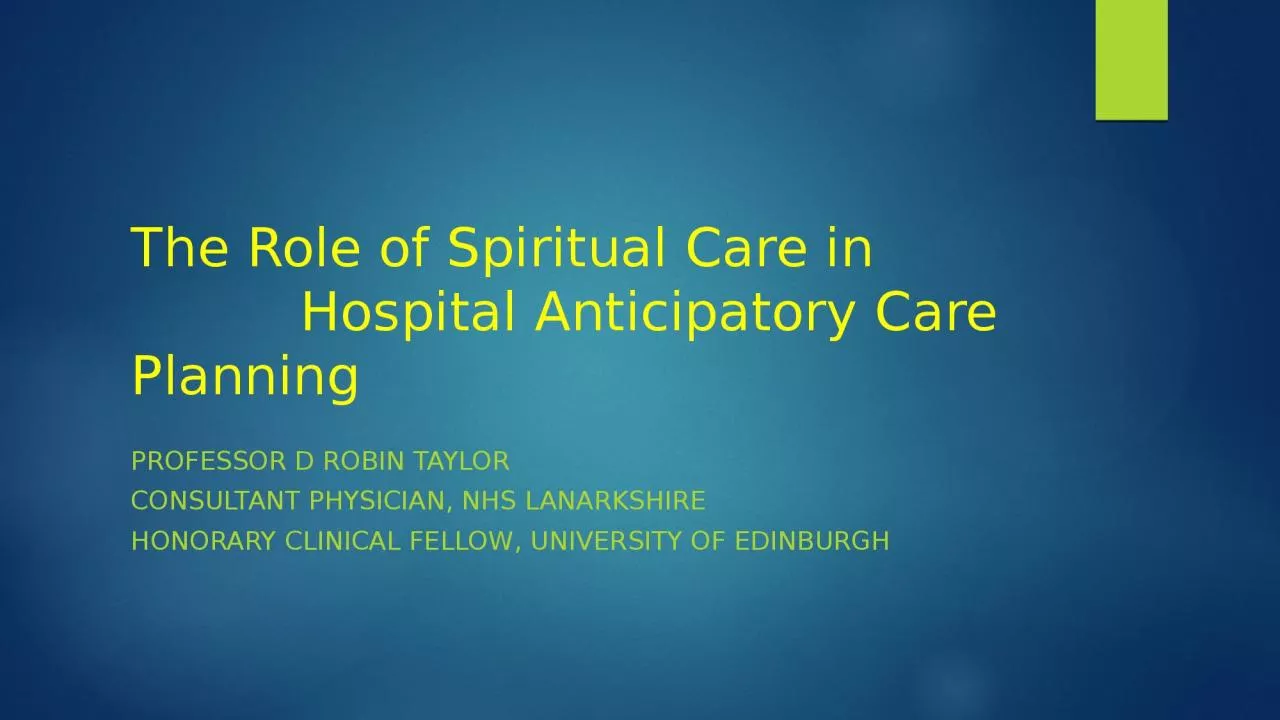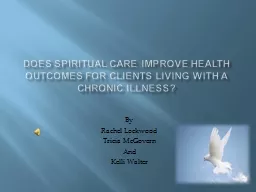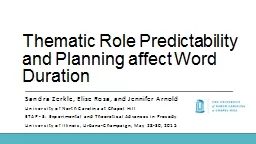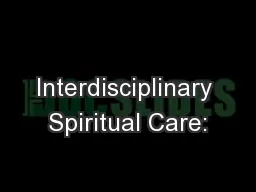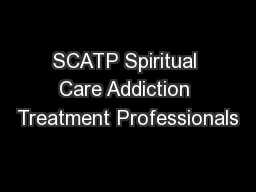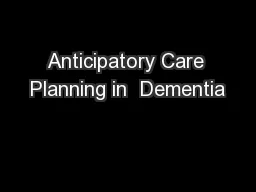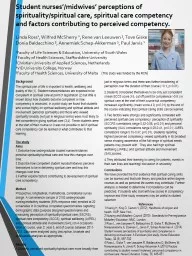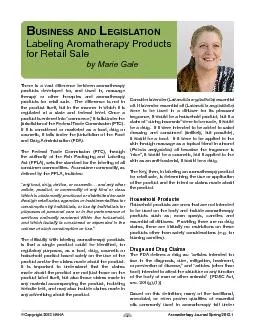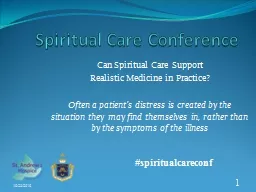PPT-The Role of Spiritual Care in Hospital Anticipatory Care Planning
Author : OptimisticPanda | Published Date : 2022-08-02
Professor d robin taylor Consultant physician nhs Lanarkshire Honorary clinical fellow university of Edinburgh I want a good death for myself if that is possible
Presentation Embed Code
Download Presentation
Download Presentation The PPT/PDF document "The Role of Spiritual Care in ..." is the property of its rightful owner. Permission is granted to download and print the materials on this website for personal, non-commercial use only, and to display it on your personal computer provided you do not modify the materials and that you retain all copyright notices contained in the materials. By downloading content from our website, you accept the terms of this agreement.
The Role of Spiritual Care in Hospital Anticipatory Care Planning: Transcript
Download Rules Of Document
"The Role of Spiritual Care in Hospital Anticipatory Care Planning"The content belongs to its owner. You may download and print it for personal use, without modification, and keep all copyright notices. By downloading, you agree to these terms.
Related Documents

